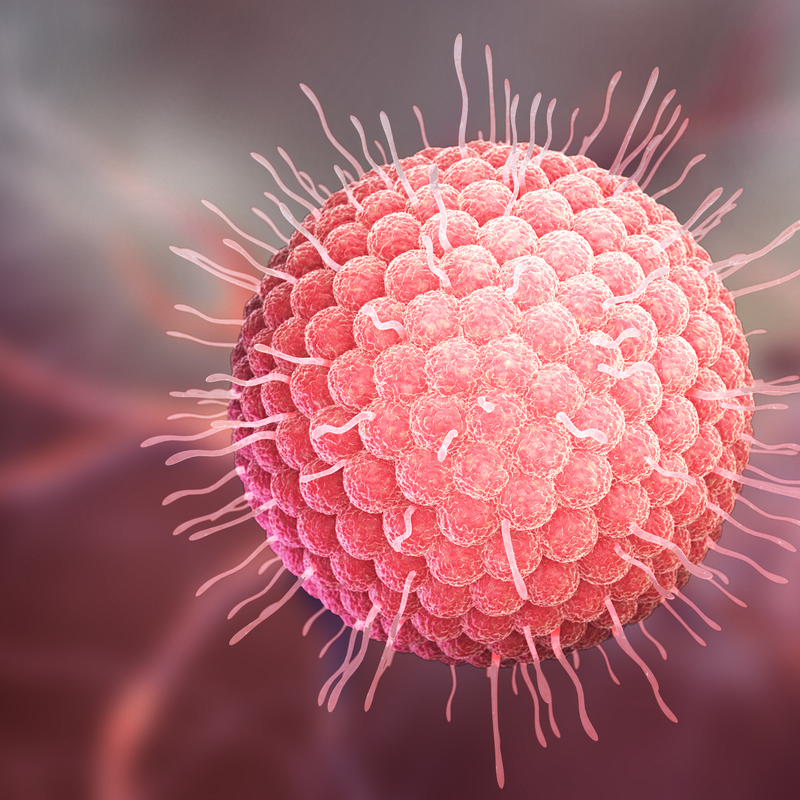
What is shingles?
Shingles is a disease caused by the varicella-zoster virus, or VZV for short. In addition to shingles, this virus is also the cause of chickenpox. Most often, these occur as the first infection with the virus. This means that a person who is infected with the VZV for the very first time suffers chickenpox . However, after the disease has healed, the virus remains in the body for life and can break out again later in life as so-called shingles.
How contagious is shingles?
People can only get shingles if they have already had chickenpox. This is the same pathogen. This is essential to know when it comes to the risk of infection with shingles. Ultimately, however, the infectivity of chickenpox is decisive and this is very high. For every 100 infectious people , at least 90 others will get the disease if they have had contact with someone who is infectious . However, if you have never had chickenpox yourself, you are not at risk for infection with VZV.
How long is shingles contagious?
Patients, who develop shingles, are highly contagious from the moment the characteristic skin blisters appear until they crust over. As a rule, this lasts up to seven days. Chickenpox , on the other hand, is already contagious after one to two days after the onset of the skin rash. The risk of infection also persists until the skin blisters have completely crusted over. With chickenpox, the also lasts about seven days.
How does shingles make itself felt?
Symptoms of shingles cannot be standardised, because they vary from case to case. Above all, it always depends on the severity of the outbreak. Most of the time, however, the symptoms follow a certain pattern.
In the early phase, there are no particular complaints or specific symptoms. Those affected complain of symptoms such as headache and pain in the limbs, fatigue or even a slight fever. The affected area of the skin may experience discomfort, such as tingling. After two to three days, the tingling turns into pain and the characteristic shingles rash develops.
Pain can be present before, during or even after the rash. The VZV attack the nerves in shingles and this leads to neuropathic pain. This pain usually manifests itself as stinging or burning. People who are affected report very severe pain during shingles. Even after the flare-up has healed, many still complain of post-herpetic neuralgia.
The typical sign of shingles is the characteristic rash with skin blisters, which is also called zoster. This rash usually starts with reddening of the affected skin and the formation of small nodules. Within a few hours, these change into itchy blisters. The blisters are filled with a clear fluid at the beginning, but this becomes cloudy over time. This phase lasts about five days, after which the blisters burst open and dry out completely after about 10 days. During this process, yellowish crusts are formed, and when they fall off, the skin rash also disappears. Overall, it can be said that shingles lasts between two and four weeks.
How is shingles diagnosed?
Usually affected people go to the dermatologist or to the family doctor with the suspicion of shingles. The doctor can make the diagnosis relatively quickly based on the clinical picture , because the type of symptoms and the course of the disease are typical for a secondary disease caused by the VZV. In order to be able to exclude another disease with similar symptoms, there are two ways of reliable detection:
- Direct detection: The virus can be detected directly with the help of a wound swab . With a PCR test or a special cell culture.
- Indirect detection: In this case, the blood of the affected person is tested for antibodies against the VZV. If the brain is affected, a examination of the cerebrospinal fluid is necessary.
How is shingles treated?
The symptoms can be relieved with medication. Paracetamol or ibuprofen can be taken for the pain. In addition, these have a fever-reducing effect. If the need arises, stronger painkilling medicines can be prescribed by the doctor . The rash can be treated with tinctures or ointments to make the itching more bearable. Certain medications can also speed up the drying of the skin blisters. In addition to these symptomatic measures, causative ones are also used. The sufferer is given an antiviral medication to fight the virus .
What can cause shingles?
In normal case, the body's own immune system is excellent at keeping the viruses in an inactive state. However, if the immune defence is weakened , the pathogens awaken and trigger shingles. The following risk factors are mainly responsible for such a gap in the immune defence:
- psychological strain and great stress,
- excessive doses of UV radiation,
- Infections that precede shingles,
- AIDS: certain cells of the immune system are destroyed by the HI virus, this in turn leads to a weakening of the immune system,
- chemotherapy administered to fight cancer,
- Immune suppressants, which reduce the body's defences,
- congenital immune defects.
How can shingles be prevented?
People, who have never been infected with VZV, can get vaccinated . This protects against the childhood disease chickenpox, as well as against subsequent shingles. In the meantime, a vaccination against shingles is even available on the market . This reduces the risk of contracting shingles. This lowers the risk of getting shingles . Unlike the previously used live vaccine, this vaccine consists of killed pathogens.
What is the prognosis for shingles?
With shingles, the prognosis is generally excellent. About two-thirds of patients heal without complications. Normally, a person only gets shingles once. In principle, however, the virus can reactivate several times in the body, since even antiviral therapy can only inhibit the reproduction of the virus, but not kill it.
